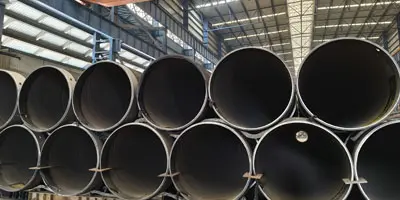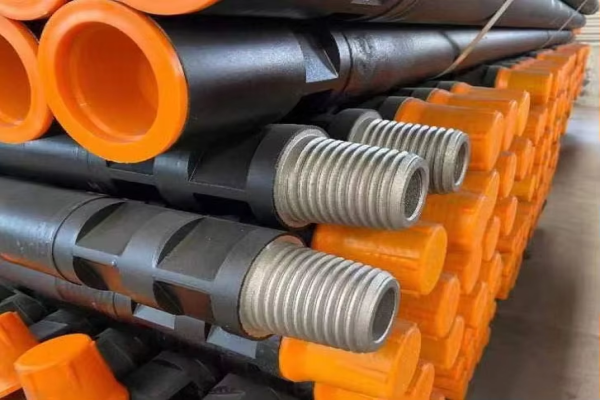In drilling operations, drill bit and drill pipe are key components that complement each other, and their effective cooperation ensures the smooth progress of drilling projects. Although the functions of drill bit and drill pipe are different, the close connection between them plays a vital role in the drilling process. This article will explore the relationship between drill bit and drill pipe in detail, and gain an in-depth understanding of their functions, structures, material composition and the role they play in the entire drilling process.
The role of drill pipe in drilling operations
The drill pipe is the main component of the drill string and a vital tool in drilling operations. Its main function is to transmit torque and rotational force from the ground drilling equipment to the drill bit and transport drilling fluid. In addition, as the depth of the well increases, the wellbore is deepened by continuously connecting new drill pipes. The drill pipe also plays an irreplaceable role in managing downhole pressure, maintaining well wall stability, and circulating drilling fluid.
Drill pipe is usually made of high-strength seamless steel, and its structure includes a pipe body and a joint. The joint is connected to the pipe body by welding or forging to ensure seamless transmission of torque and pressure and ensure the smooth progress of drilling operations.
The composition and function of the drill string
The drill string consists of multiple parts, including the drill bit,
drill collar, drill pipe, stabilizer, special joints and square drill pipe. The basic functions of the drill string include:
Lifting and lowering the drill bit;
Applying drilling pressure;
Transmitting power;
Delivering drilling fluid;
Performing special operations, such as squeezing cement, handling underground accidents, etc.
Drill bit types and their importance
The drill bit is the cutting tool at the bottom of the drill string, responsible for breaking the underground rock formation. According to different geological conditions, drill bits can be divided into the following categories:
Scraper drill bit: used for soft formations;
Tone drill bit: suitable for a variety of formations;
Diamond drill bit: used for hard and abrasive formations;
Carbide drill bit: used for medium-hard formations;
Special drill bit: suitable for special drilling conditions.
The effectiveness of the drill bit is usually measured by mechanical penetration rate and footage. Choosing the right drill bit according to different geological conditions is the key to optimizing drilling efficiency and reducing downtime.
Performance and function of drilling fluid
Drilling fluid is an important fluid in drilling operations. Its main properties include:
Density: used to control downhole pressure;
Viscosity: ensure that cuttings are carried back to the ground smoothly;
Yield value: reflects the ability of fluid to suspend cuttings;
Static shear force: indicates the ability of fluid to keep cuttings suspended when flow stops;
Water loss: refers to the amount of drilling fluid that penetrates into the formation;
Mud cake thickness: prevents liquid from penetrating into the well wall;
Sand content: needs to be kept at a low level to prevent wear of the drill string;
Acidity and solid content: affect the stability of drilling fluid and downhole conditions.
The main functions of drilling fluid include cooling and lubricating the drill bit, maintaining wellbore stability, controlling downhole pressure, and completing drilling operations through fluid power transmission.
The connection function of drill bit and drill pipe
Drill bit and drill pipe are two key components closely connected in drilling operations. They work together to complete the drilling task. Their relationship can be explained from the following aspects:
Functional complementarity:
The drill bit is the component that directly contacts the formation and is responsible for cutting and breaking underground rocks or soil to form a wellbore. The design and structure of the drill bit determine its drilling effect in different formations.
The drill pipe is a tool that transmits the rotational force and pressure of the ground equipment to the drill bit. It not only connects the drill bit, but also provides a channel for the drill bit to circulate drilling fluid, helping to cool the drill bit and clean up the debris at the bottom of the well.
Physical connection:
The drill bit is installed at the bottom of the drill pipe and connected together by threads and other means. The rotational force of the drill pipe is transmitted to the drill bit through the drill string system, causing the drill bit to rotate and break the formation, thereby achieving drilling. The length of the drill pipe can be spliced and extended according to the drilling depth.
Drilling fluid transmission:
The inner hole of the drill pipe can be used to transport drilling fluid, which flows through the drill pipe to the nozzle of the drill bit, cools the drill bit and takes away the cuttings. At the same time, the drilling fluid can also maintain pressure in the well to prevent accidents such as well collapse.
Force coordination:
The drill bit bears the hardness and friction of the formation, while the drill pipe bears the rotational force and pressure transmitted by the drilling equipment. The combination of the drill bit and the drill pipe enables the entire drilling system to effectively cope with the complex geological conditions underground.
Conclusion
In summary, the drill bit and
drill pipe are inseparable in drilling operations. The drill pipe is responsible for transferring mechanical energy and drilling fluid to the drill bit, while the drill bit is responsible for cutting and breaking the formation. Together, they form the drill string, connecting the ground equipment with the bottom of the well, and are the core tools for achieving various drilling operations. Effective management and use of drilling tools can not only improve drilling efficiency, but also reduce the possibility of accidents and reduce economic losses.






 English
English Español
Español بالعربية
بالعربية











 Phone :
Phone :  Whatsapp :
Whatsapp :  Email :
Email : 


